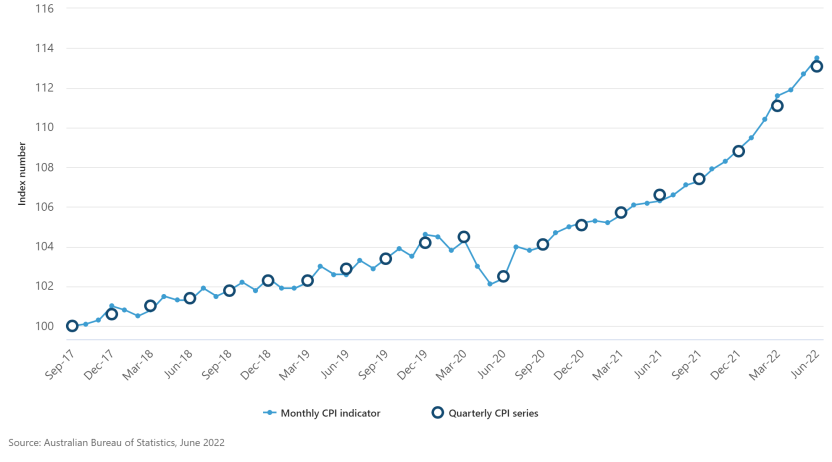Figure 1: All groups annual and quarterly CPI inflation (%): 2000 - 2022
[["Jun-00","Sep-00","Dec-00","Mar-01","Jun-01","Sep-01","Dec-01","Mar-02","Jun-02","Sep-02","Dec-02","Mar-03","Jun-03","Sep-03","Dec-03","Mar-04","Jun-04","Sep-04","Dec-04","Mar-05","Jun-05","Sep-05","Dec-05","Mar-06","Jun-06","Sep-06","Dec-06","Mar-07","Jun-07","Sep-07","Dec-07","Mar-08","Jun-08","Sep-08","Dec-08","Mar-09","Jun-09","Sep-09","Dec-09","Mar-10","Jun-10","Sep-10","Dec-10","Mar-11","Jun-11","Sep-11","Dec-11","Mar-12","Jun-12","Sep-12","Dec-12","Mar-13","Jun-13","Sep-13","Dec-13","Mar-14","Jun-14","Sep-14","Dec-14","Mar-15","Jun-15","Sep-15","Dec-15","Mar-16","Jun-16","Sep-16","Dec-16","Mar-17","Jun-17","Sep-17","Dec-17","Mar-18","Jun-18","Sep-18","Dec-18","Mar-19","Jun-19","Sep-19","Dec-19","Mar-20","Jun-20","Sep-20","Dec-20","Mar-21","Jun-21","Sep-21","Dec-21","Mar-22","Jun-22"],[[0.69999999999999996],[3.7999999999999998],[0.29999999999999999],[1.1000000000000001],[0.80000000000000004],[0.29999999999999999],[0.90000000000000002],[0.90000000000000002],[0.69999999999999996],[0.69999999999999996],[0.59999999999999998],[1.3],[0],[0.59999999999999998],[0.5],[0.90000000000000002],[0.5],[0.40000000000000002],[0.69999999999999996],[0.69999999999999996],[0.59999999999999998],[1],[0.5],[0.80000000000000004],[1.7],[0.90000000000000002],[-0.10000000000000001],[0],[1.3],[0.69999999999999996],[0.90000000000000002],[1.3],[1.3999999999999999],[1.2],[-0.29999999999999999],[0.10000000000000001],[0.40000000000000002],[1],[0.5],[1],[0.59999999999999998],[0.69999999999999996],[0.40000000000000002],[1.3999999999999999],[0.90000000000000002],[0.59999999999999998],[0],[0.10000000000000001],[0.5],[1.3999999999999999],[0.20000000000000001],[0.40000000000000002],[0.40000000000000002],[1.2],[0.80000000000000004],[0.59999999999999998],[0.5],[0.5],[0.20000000000000001],[0.20000000000000001],[0.69999999999999996],[0.5],[0.40000000000000002],[-0.20000000000000001],[0.40000000000000002],[0.69999999999999996],[0.5],[0.5],[0.20000000000000001],[0.59999999999999998],[0.59999999999999998],[0.40000000000000002],[0.40000000000000002],[0.40000000000000002],[0.5],[0],[0.59999999999999998],[0.5],[0.69999999999999996],[0.29999999999999999],[-1.8999999999999999],[1.6000000000000001],[0.90000000000000002],[0.59999999999999998],[0.80000000000000004],[0.80000000000000004],[1.3],[2.1000000000000001],[1.8]],[[3.1000000000000001],[6.0999999999999996],[5.7999999999999998],[6],[6.0999999999999996],[2.5],[3.1000000000000001],[3],[2.7999999999999998],[3.2000000000000002],[2.8999999999999999],[3.2999999999999998],[2.6000000000000001],[2.6000000000000001],[2.3999999999999999],[2],[2.5],[2.2999999999999998],[2.5],[2.3999999999999999],[2.5],[3.1000000000000001],[2.7999999999999998],[2.8999999999999999],[4],[4],[3.2999999999999998],[2.5],[2.1000000000000001],[1.8],[2.8999999999999999],[4.2999999999999998],[4.4000000000000004],[5],[3.7000000000000002],[2.3999999999999999],[1.3999999999999999],[1.2],[2.1000000000000001],[2.8999999999999999],[3.1000000000000001],[2.8999999999999999],[2.7999999999999998],[3.2999999999999998],[3.5],[3.3999999999999999],[3],[1.6000000000000001],[1.2],[2],[2.2000000000000002],[2.5],[2.3999999999999999],[2.2000000000000002],[2.7000000000000002],[2.8999999999999999],[3],[2.2999999999999998],[1.7],[1.3],[1.5],[1.5],[1.7],[1.3],[1],[1.3],[1.5],[2.1000000000000001],[1.8999999999999999],[1.8],[1.8999999999999999],[1.8999999999999999],[2.1000000000000001],[1.8999999999999999],[1.8],[1.3],[1.6000000000000001],[1.7],[1.8],[2.2000000000000002],[-0.29999999999999999],[0.69999999999999996],[0.90000000000000002],[1.1000000000000001],[3.7999999999999998],[3],[3.5],[5.0999999999999996],[6.0999999999999996]]]
[]
[{"value":"0","axis_id":"0","axis_title":"","axis_units":"","tooltip_units":"","table_units":"","axis_min":null,"axis_max":null,"tick_interval":"4","precision":"-1","data_unit_prefix":"","data_unit_suffix":"","reverse_axis":false}][{"value":"0","axis_id":"0","axis_title":"%change","axis_units":"","tooltip_units":"(%)","table_units":"(%)","axis_min":null,"axis_max":null,"tick_interval":null,"precision":"-1","data_unit_prefix":"","data_unit_suffix":"","reverse_axis":false}]




